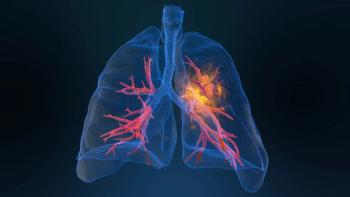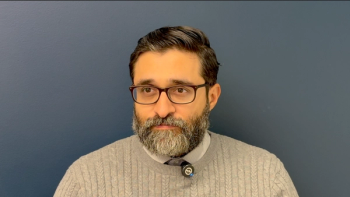
Is It Too Soon to Augment Lung Cancer Screening Guidelines for High-Risk Patients?
A study looked at whether a lung cancer risk prediction model could identify patients at high risk for lung cancer who could receive less frequent low-dose CT screening.
A lung cancer risk prediction model identified patients at high risk for lung cancer who could forgo annual low-dose CT screening for a specified amount of time, potentially augmenting current lung cancer screening guidelines. The study results were recently
However, during an interview with Cancer Network,
“Lung cancer screening has been demonstrated in now two very large clinical trials to reduce deaths from lung cancer, and it’s currently recommended that people who are at high risk be screened annually,” said Raz. However, last year, a
The risk prediction model that researchers developed in the current study built upon the already validated risk prediction model derived from the National Lung Cancer Screening Trial. The difference between the models is that the latest incorporated low-dose CT screening results to better identify patients who may not benefit from continued annual screening.
The model was developed via a secondary analysis of the National Lung Cancer Screening Trial Lung Screening Study data (N = 14,576) and then validated in the National Lung Cancer Screening Trial American College of Radiology Imaging Network data (N = 7,653). Individuals included in the analysis received three screens and had to remain free from lung cancer 1 year after the last screen.
During the 3-year follow-up period after the third screen, 298 lung cancers were detected, or 1.3% of the study population. Overall, lung cancer risk increased as the number of positive screens increased and as the positive screens occurred more recently. Compared with patients who had three negative screens, patients who had one positive screen, with the third being negative, had an increased risk for lung cancer (odds ratio [OR], 1.93; 95% CI, 1.34–2.76).
Patients who had two positive screens, with the third being negative, had an ever greater increased risk for lung cancer (OR, 2.66; 95% CI, 1.60–4.43). The greatest increased risk was seen for patients who had two or more positive screens, with the third being positive (OR, 8.97; 95% CI, 5.76–13.97).
“The study suggests that there are people who, after three negative screens, may be of lower risk and may warrant less intensive screening, but the study isn’t conclusive and there need to be more studies done,” Raz said. “The main issue that we face is marked underutilization of lung cancer screening in those who are eligible.”
Raz explained that there are a variety of barriers to adoption of lung cancer screening, including misconceptions about insurance coverage and efficacy as well as lack of education among both patients and primary care physicians. “There’s not a lot of programs for educating people that lung cancer screening exists. That’s a big barrier.”
“There’s nothing wrong with what [the researchers] did, but in terms of the actual implications of it for patients, I don’t think anyone would consider changing the guidelines based on something like this,” Raz said.
Newsletter
Stay up to date on recent advances in the multidisciplinary approach to cancer.














































































